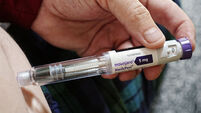Increase in super-resistent TB
Health experts have reported a disturbing increase around the world in tuberculosis infections resistant to antibiotics.
“It’s basically a death sentence. If people are failing first and second-line drugs and we don’t have in the pipeline a new drug for immediate use, that’s a crisis,” said Dr Marcos Espinale, executive secretary of the World Health Organisation’s Stop TB Partnership.
As campaigners prepare for World TB Day today, it has emerged that the number of cases of tuberculosis in England, Wales and Northern Ireland has topped 7,000 a year.
Latest figures from the Health Protection Agency showed a total of 7,167 cases reported in 2004 compared with 6,837 in 2003.
The Centres for Disease Control and Prevention and WHO surveyed a network of 25 tuberculosis laboratories on six continents from 2000 to 2004 and found that one in 50 TB cases around the world is resistant not only to the usual first-choice TB treatments, but also to many medications that represent the second line of defence.
The survey represents the first international data on what is being called “extensively drug-resistant” TB.
For more than a decade, health officials have worried about “multidrug-resistant” TB, which can withstand the mainline antibiotics isoniazid and rifampin. One in five TB cases falls into that category, according to the survey.
But the survey also found many cases of a more difficult form of TB – one that does not respond to at least three of six classes of second-line drugs. That is especially worrisome, because second-line drugs are generally considered more toxic and less effective.
“These are individuals who are virtually untreatable with available drugs,” said Dr Kenneth Castro of the CDC.
The survey looked at 17,690 TB cases that were analysed for drug susceptibility. Of those, 20% were multidrug-resistant and 2% were extensively drug-resistant.
The problem was worst in Latvia, where public health care deteriorated after the Soviet Union collapsed. Doctors believe TB develops resistance to drugs because some patients fail to complete a full course of medication.
In the US, health officials looked at 169,654 TB cases from 1993 to 2004 that were analysed for their drug response and found that 1.6% were multidrug-resistant and 0.04% extensively drug-resistant.
US multidrug-resistant cases rose from 2003 to 2004, from 113 to 128. Though the number was small, it represented the largest single-year increase in more than 10 years.
Overall, the TB rate in the US has never been lower. In 2005, about 14,100 cases were reported, or 4.8 cases per 100,000 people. That is a 4% decline in the rate from 2004. However, the TB rate in foreign-born people in the US was 8.7 times that of US natives.
Dr Henry Blumberg, an Emory University medical school professor, said the figures are preliminary and the problem may be bigger than the numbers indicate.
Some drugs under development might become effective treatments for these difficult forms of TB. But funding for TB control and research has not kept up with inflatin in the past decade, Dr Blumberg said.













